In the back of my garden, I have a small patch of fennel (Foeniculum vulgare) that grows year-round and stands five feet tall. Sometimes I’ll harvest the fronds for a salad or a bulb for my favorite seafood stew, or even the pollen or seeds for my cooking, but for the most part, I let the fennel grow “wild” here as part of a natural butterfly garden.
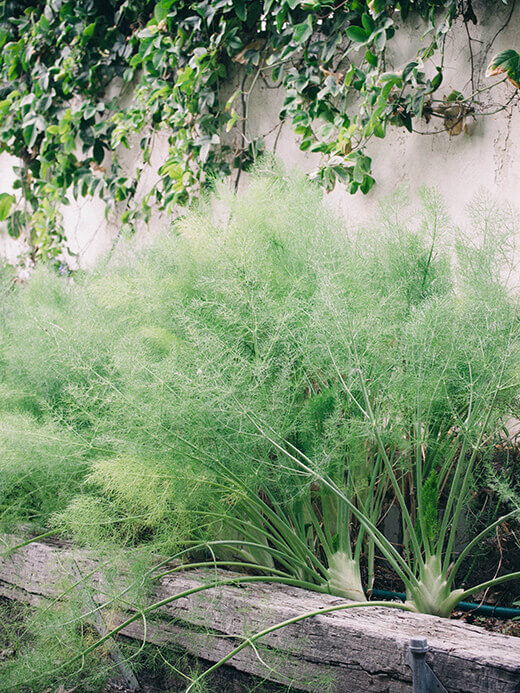
Aside from being edible and beautiful with wisps of anise fragrance wafting through the air, it also happens to be a beneficial plant that functions as a trap crop.
What does it trap? Parsleyworms, the striking caterpillars that eventually turn into swallowtail butterflies.
West of the Rockies, parsleyworms are the beginnings of the anise swallowtail butterfly. Its eastern version is the black swallowtail butterfly, and while the butterflies look distinctly different, their caterpillars and chrysalises are nearly identical.
Read more: Caterpillar Identification: A Visual Guide to 32 Types of Green Caterpillars in Your Garden
Parsleyworms are so named because they feed on members of the parsley family, Apiaceae, including parsley, dill, carrot, Queen Anne’s lace, and of course, fennel.
They can be found in all stages of life on these host plants, and it’s truly fascinating to revisit your plants each week to see their natural transformation. As the parsleyworm eats and grows, it sheds an exoskeleton and emerges with a completely different appearance. In total, it goes through five instars (stages) of life.
Here’s the first (or possibly second) instar…
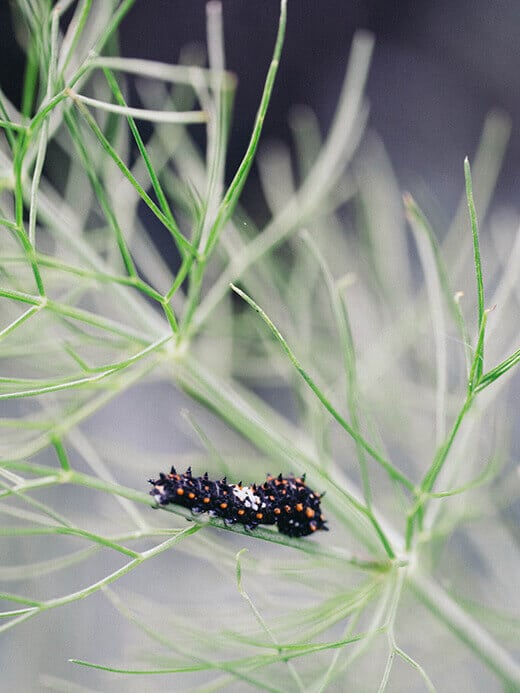
The third instar…
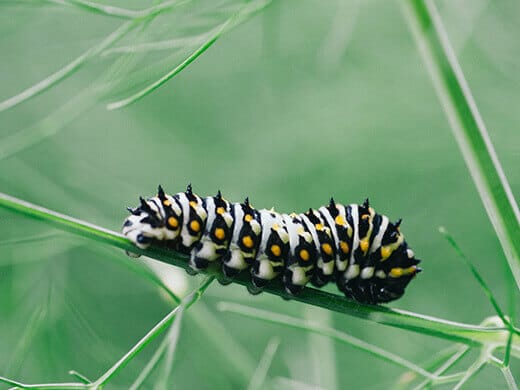
The fourth instar (where it turns into the plump black-and-green striped caterpillar that you may be most familiar with)…
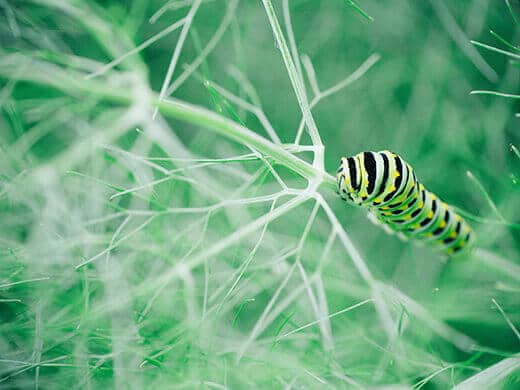
And the fifth and final instar, also known as the chrysalis stage. It’s from here that the parsleyworm pupates and emerges as an adult butterfly.
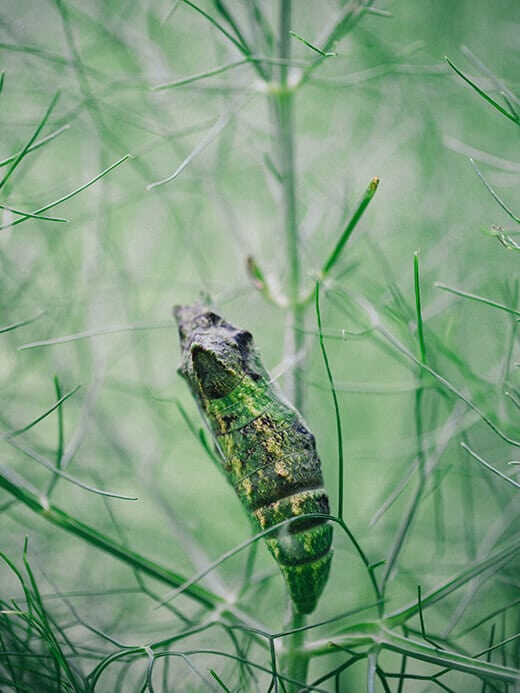
Since swallowtail butterflies lay their eggs on any member of the Apiaceae family, you might occasionally find them on your carrots or parsley as well. They have large appetites, so unless you planted enough for yourself and the butterflies, it can be a depressing sight to see your food crop munched down to its stems by an army of hungry caterpillars.
Planting a separate crop of fennel (or any related member) can help preserve the butterflies in your garden. I especially like Florence fennel, or finocchio, a bulbing variety that gives you a vegetable, an herb, and two spices over its lifespan. It’s a cool-weather crop that can be planted after the last frost for a spring harvest, or mid to late summer for an autumn harvest.
If you find a parsleyworm feeding where it shouldn’t be feeding, you can simply relocate it to your fennel patch and at the end of the season, you’ll still have some bulbs to harvest. A win all around.
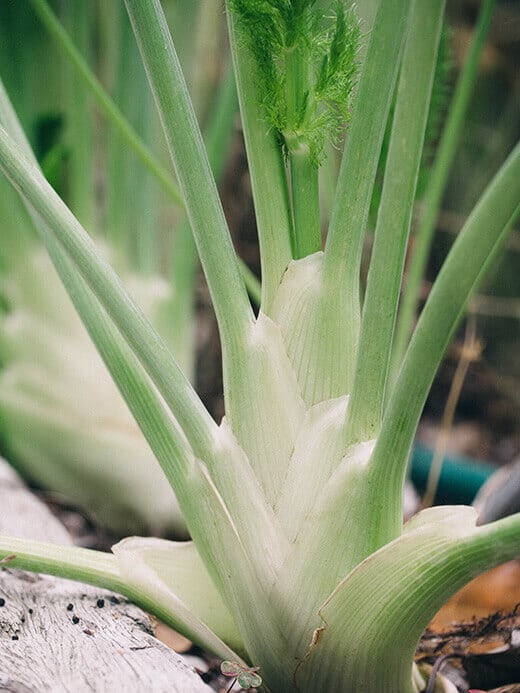
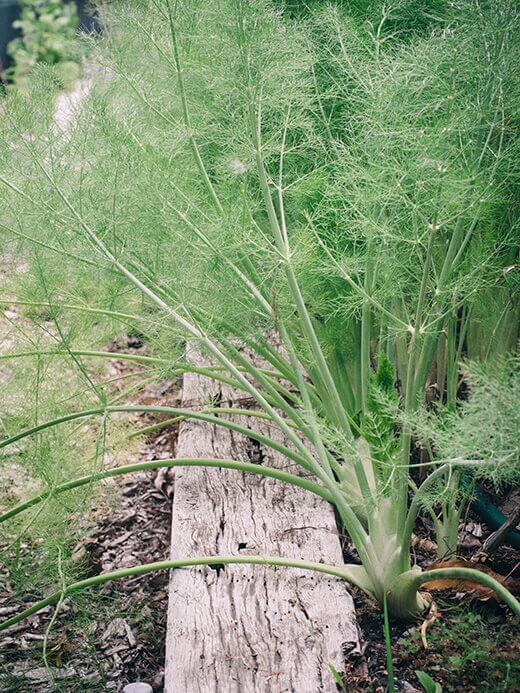
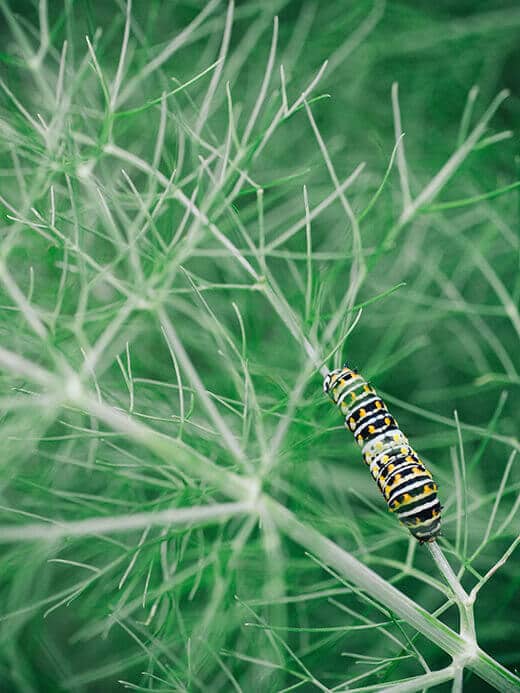


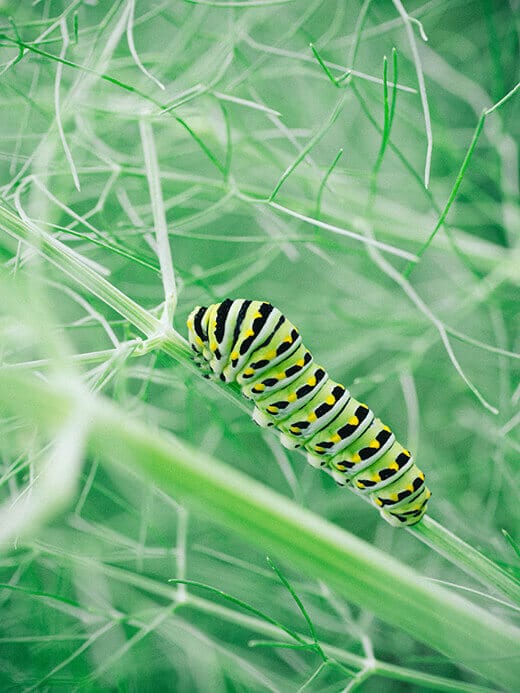













Thank you so much for answering the reason for my search: whether I’d lose the Foeniculum vulgare bulb to butterfly caterpillar damage. I looked at at least 20 search results before hearing that they can harm the plants enough to reduce the crop.
I raise these beauties for conservation purposes, so fun. Have raised about 70 in a month so far. There’s some inaccuracies here though. These are not worms but caterpillars that change into butterflies via metamorphosis. The chrysalis is different from the cocoon in that the cocoon is spun around the insect by the insect, and the chrysalis IS the insect and isn’t spun like the cocoon is but is part of the metamorphosis process. I use fennel to feed my caterpillars who eat from the carrot family. The problem is keeping the fennel upright/fresh as it wilts almost immediately once cut and put into floral tubes for the caterpillars. By the way, butterflies don’t eat plants as the one poster suggested, they nectar on blooms. Maybe I need to just put the entire plant inside the habitat for the cats to devour.
Parsleyworm is the actual name for the caterpillar of a swallowtail butterfly. I also did not mention cocoons anywhere in this post, so I’m wondering if you’re referencing a different article. Either way, quite a feat to raise 70+ of these beauties!
Do you put the fresh/upriht fennel in the floral tube, with fresh water? That works, for me.
But isn’t fennel alleopathic? I’ve been dying to grow it, but I keep reading about the negative influence it has on all other plants.
*allelopathic
I grow a perennial bed of fennel next to a kumquat tree without any adverse effects, so it definitely depends on the plant.
The entire Apiaceae family (including cumin, dill, etc) actually has allelopathic characteristics. It’s believed that the allelochemicals are found in the oils of the seeds themselves. Fennel seed has been shown to inhibit the seed germination and/or root elongation of certain plants when there’s a high concentration of fennel planted in an area (because presumably, where there’s a lot of fennel, there’s a lot of fennel seed that self-sowed).
If you’re only growing fennel as an annual, you can plant it anywhere in the garden so long as you pull it up before it seeds. If you’re growing it year-round, it’s best to keep it somewhat isolated in the garden because it does self-seed easily and you may find yourself weeding it constantly from your vegetable beds.
Thank you so much! I’ll be sure to try it next spring, probably isolating a little in case I can’t get to the seeds in time. 🙂